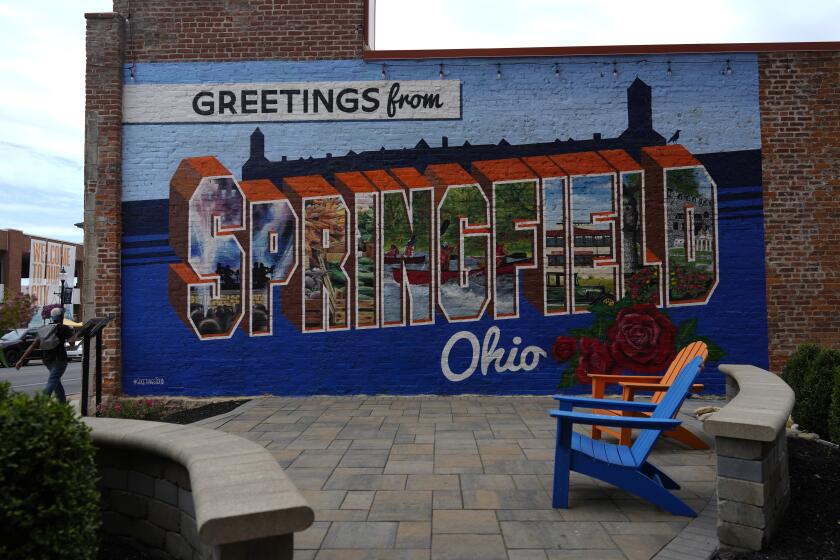Editorial: Three nights and thousands of homeless to be counted on L.A. County’s streets
In the last week of January, over the course of three consecutive nights, as many as 6,000 volunteers will fan out across Los Angeles County to take a census of the people who, by day, are so visible yet so ignored.
In teams of two to four, volunteers will walk the streets looking for homeless individuals as well as signs of encampments — a makeshift tent, a vehicle with something covering the windows, maybe an item of clothing. Volunteer counters don’t knock on windows or peer under tent flaps. They don’t talk to the people they find; they record only what they see. They are trained before they go out and are encouraged to stop if they feel unsafe. In some areas, an undercover law enforcement officer may be assigned to a team.
On the nights of the count, officials will also take a tally of people staying at shelters. And, importantly, they will send professional outreach workers into the streets over several weeks — starting Tuesday — to interview more than 4,000 homeless people and compile demographic data on them.
The 2015 Greater Los Angeles Point-in-Time Homeless Count is the sixth biennial count the county has undertaken. It is required by the U.S. Department of Housing and Urban Development and conducted by the Los Angeles Homeless Services Authority, the city-county agency that coordinates housing and services for the homeless and disburses over $70 million in federal, state, county and city funds annually to programs. Like any census, it is imperfect, but this year it’s more ambitious than ever, discarding a statistically discredited “hidden homeless” telephone survey (the results of which HUD refused to accept) and beefing up the street census. It will deploy more volunteers and cover more ground — 1,501 of the county’s 1,887 census tracts — than ever before.
The count not only reveals the obvious — whether there are more or fewer homeless people than in the past — but also gives a clearer picture of who is living on the streets and why. This year, outreach workers will ask a wide range of questions that go well beyond age and ethnicity and include everything from gender identity to disabilities and medical conditions. Homeless people will be asked whether they were victims of domestic violence or whether they’ve served time in prison. If they’re veterans, what wars did they fight in? What government services or benefits do they receive? Have they been denied a shelter bed and if so, why? How did they lose their housing?
In recent years, the count has shown that while the overall number of homeless hasn’t changed much — in 2013 the total number counted on the streets and in shelters was 39,463 — there have been significant demographic changes. Family homelessness was down between 2011 and 2013. So was veteran homelessness, apparently thanks to hard work by non-profits, the county and the federal government. When homeless authority officials noticed in the last count that more homeless youths than expected were found in the Antelope Valley and South L.A., they worked on finding service providers with expertise in dealing with young people who could go to those areas.
Los Angeles County has the second largest homeless population in the nation behind New York City. It still does not have nearly enough permanent supportive housing — where treatment and counseling services are provided on site or nearby. The count, officials say, is one of the best tools for getting more funding for it, by showing elected officials evidence of the need.
Whatever the numbers say, Homeless Services Authority officials can’t unilaterally move workers to underserved areas or erect housing on their own. Peter Lynn, the new executive director, says he musttake the information from the count to elected officials, show them where the homeless communities are, and convince them that services are needed there. Then the authority can fund community-based service providers and work with nonprofits and business leaders on creating housing opportunities.
The more specific and accurate the count is, the more compelling the evidence that can be offered to politicians, policymakers and communities. Lynn says he hopes to get extra funds to do the count annually. That’s smart. It will only increase the flow of information about the homeless to elected officials and to the communities where they live.
Anyone interested in volunteering for the count can sign up on the LAHSA website.
Follow the Opinion section on Twitter @latimesopinion
More to Read
A cure for the common opinion
Get thought-provoking perspectives with our weekly newsletter.
You may occasionally receive promotional content from the Los Angeles Times.










